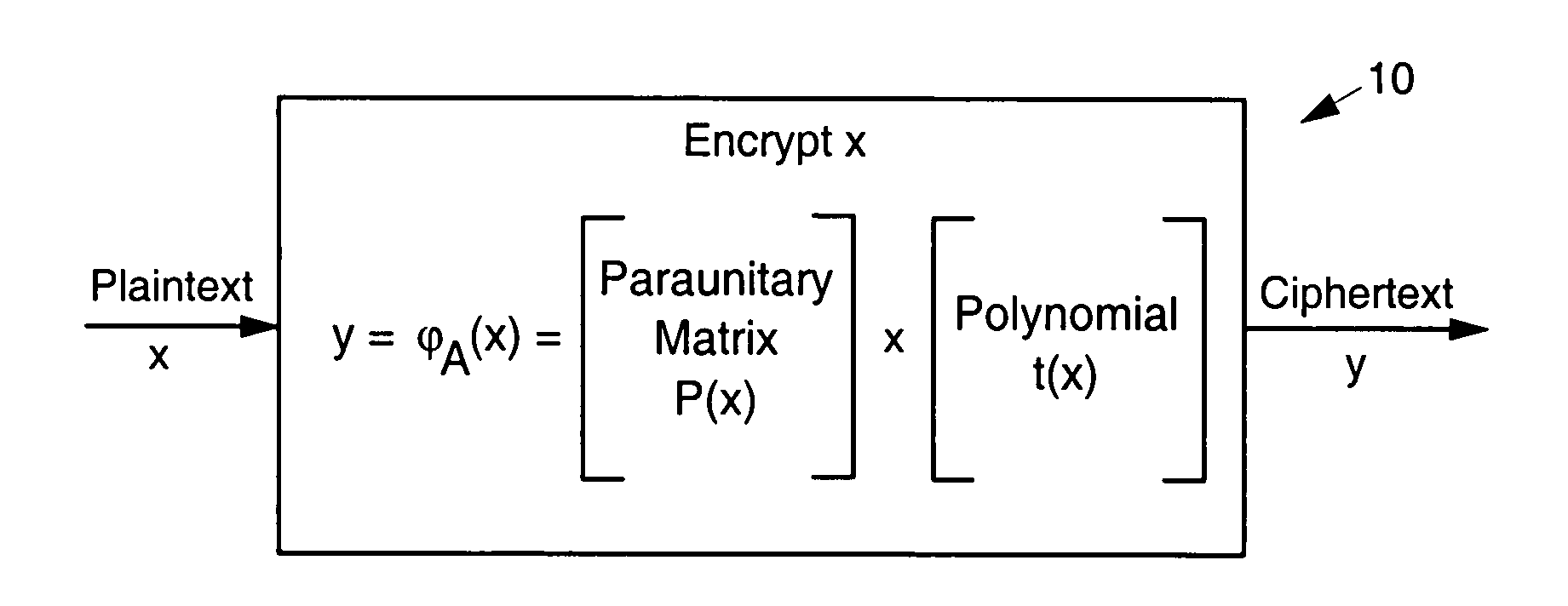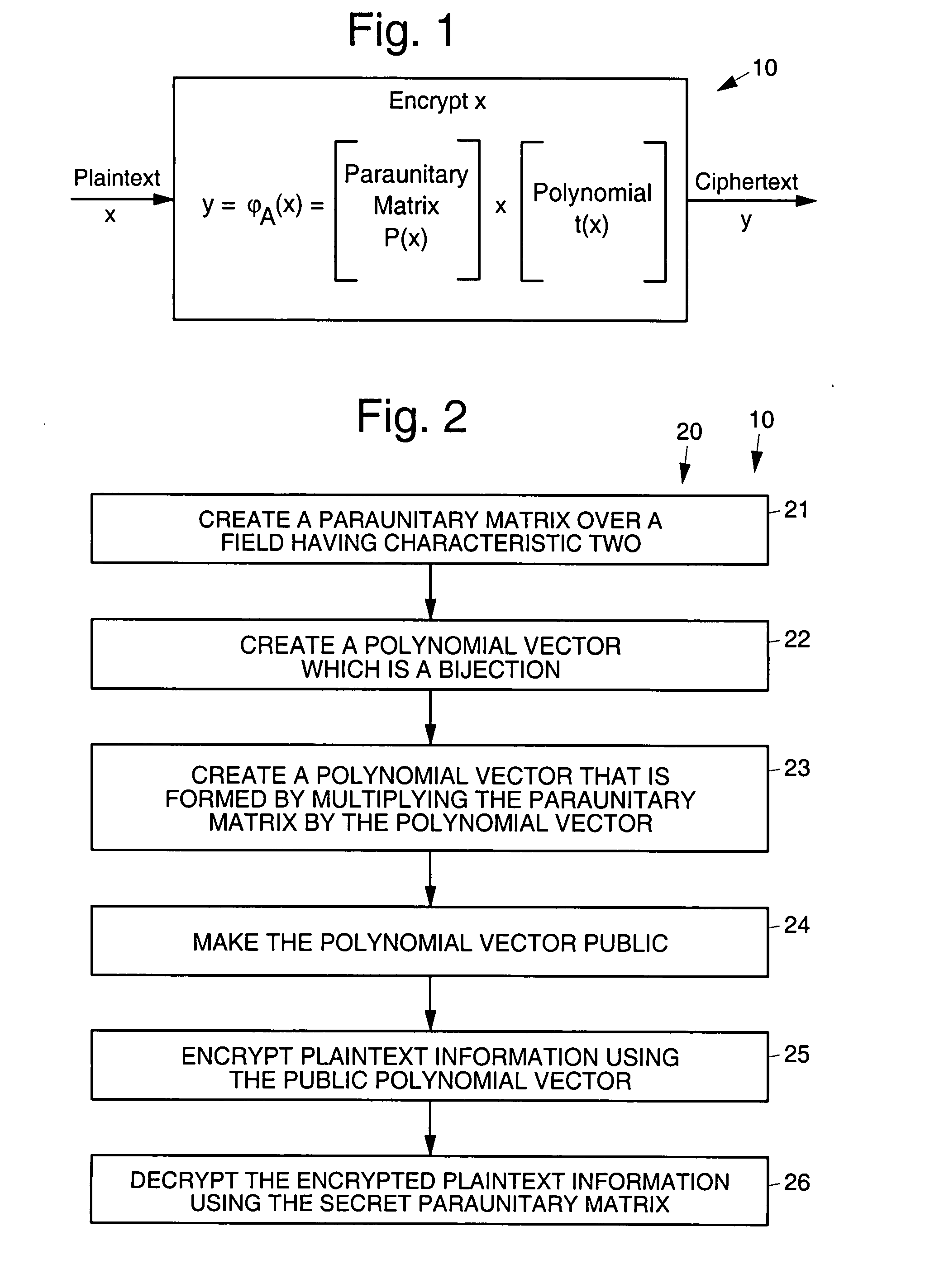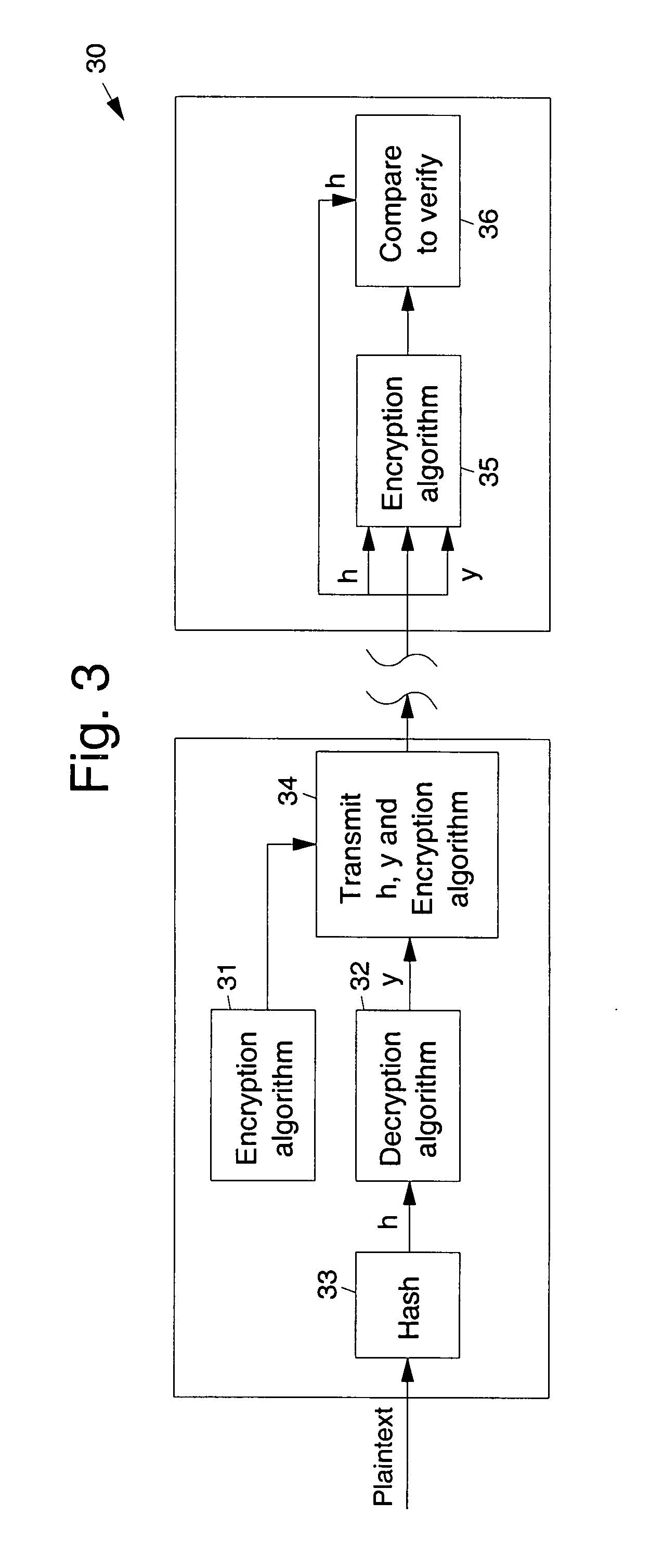Asymmetric cryptosystem employing paraunitary matrices
a cryptosystem and paraunitary matrix technology, applied in the field of public key cryptographic systems and digital signature algorithms, paraunitary, can solve the problems of too long key-setup time for computationally-limited processors, too long key-setup time in applications where bandwidth is limited, and complicated computations and longer key-setup time in the futur
- Summary
- Abstract
- Description
- Claims
- Application Information
AI Technical Summary
Benefits of technology
Problems solved by technology
Method used
Image
Examples
Embodiment Construction
[0018]Referring to the drawing figures, disclosed are public-key asymmetric cryptographic systems and methods and digital signature systems and methods that employ paraunitary matrices. Two papers by the present inventors are incorporated herein in their entirety by references. These are “Public-Key Cryptography Using Paraunitary Matrices,” IEEE Transactions on Signal Processing, Vol, 54, No. 9, September 2006, and “Multivariate Signature Using Algebraic Techniques,” ISIT 2006, Seattle, USA, Jul. 9-14, 2006.
[0019]Public-Key Cryptography
[0020]Public-key cryptography is usually used to exchange secret keys between two parties who have had no prior acquaintance. The secret key is used for encrypting information using secret-key cryptosystems. The reason public-key cryptosystems are not used to encrypt all information is that they are usually much more computationally complex whereas secret-key cryptosystems are much faster.
[0021]FIG. 1 illustrates an exemplary paraunitary asymmetric cr...
PUM
 Login to View More
Login to View More Abstract
Description
Claims
Application Information
 Login to View More
Login to View More - R&D
- Intellectual Property
- Life Sciences
- Materials
- Tech Scout
- Unparalleled Data Quality
- Higher Quality Content
- 60% Fewer Hallucinations
Browse by: Latest US Patents, China's latest patents, Technical Efficacy Thesaurus, Application Domain, Technology Topic, Popular Technical Reports.
© 2025 PatSnap. All rights reserved.Legal|Privacy policy|Modern Slavery Act Transparency Statement|Sitemap|About US| Contact US: help@patsnap.com



